|
Mary Jane McIlwain
Complementarity, Synthesis |
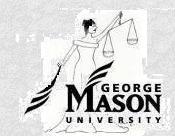 |
Home
Collaboration, and Overlay |
|
|||||||||||
| Vitae | Goal Statements | Coursework | Analytical Thinking | Professional Experiences | Research & Dissertation Planning | Documentation of Academic & Professional Growth | |||||
| EDUC 802 Leadership Seminar Dr. Gary Galluzzo Fall 2005 
 

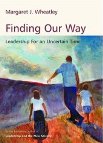 |
Can I See Me Now? Verizon’s advertising slogan, “Can you hear me now?” depicts a man wandering and checking to see if he is still connected to someone through the telephone. Am I the Verizon man? I wondered this as I began pulling together my thoughts regarding my current reality and my potential as a leader in education; however, I felt my ideas were loosely connected to one another and had lost their footing. As a result, what I have learned did not feel as though it was really part of me. In a sense, I was in a Verizon commercial, but without a cell phone. “Can I see me now…Can I see me now?” I flipped through Gardner,
Senge, and Fullan,
reading highlights to sharpen my memory of salient points. I reread my previous
assignments to see where
my thinking has been going. I
took a
second look at “Moving to the Margins” to see if my
motivations were in step
with others in the field. Everything made sense, but I still
did not’t connect to
it. Why am I
thinking the way I am? What
is drawing me to consider the power of
systems thinking and learning organizations?
Then, I had the sudden notion to reread my goal
statement which was
included as part of the application process to My goal statement reminded me that I truly believe that public schools can be successful in providing equitable academic opportunities for all students, teachers, and parents. My experience led me to understand that the power of equitable education already lives in the classrooms and that my narrow view of leadership needed to be enlightened. I actually wanted to learn to facilitate and participate in a learning organization that provided for the needs of all its children, teachers, and parents through a shared vision. This personal vision remains true today. The answer to the question, “Can I see me now?” is “Yes, I do see some structure coming into sight.” The three classes I took this semester (Research on Teaching, Leadership Seminar, and Doctoral Seminar in Education) have framed my new concept of leadership and have led me to visualize where my abilities lie within this new perspective. (Link to complete reflection) |
| EDUC 800 Ways of Knowing Dr. Anastasia Samaras Spring 2006 Hofer, B.K. & Pintrich, P.R.The development of epistemological theories 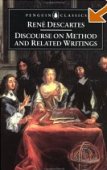 Descartes DescartesKincheloe, J.L. Epistemology, ontology, and critical constructivism's struggle against reductionism Harding, S.Is there a feminist method? John-Steiner 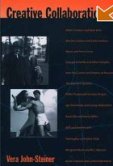  Bruner BrunerWhitehead, J. Knowledge-creation in educational leadership Kuhn  Sullivan, G. Art practice as research: Inquiry in the visual arts Holton, G. The roots of complementarity Hamilton, M.L. Professional knowledge, teacher education, and self study |
Holy Smoke, Bat Man!
I Might Be Critical, Too!
I suppose
taking the critical stance could have been a sort of alter
ego—one that I knowingly
or unknowingly hid with the super
hero suit in the At the onset of the semester I was aware that I wanted to be part of a learning organization that engaged in helping individuals reach their own self actualization within the “connected whole.” Reading Peter Senge’s book, The Fifth Discipline, helped to define this goal and to put it into a system that would guide me through the growing process necessary to becoming that sort of scholar. This system is a balancing system that serves as a place holder for the following variables or characteristics: personal mastery, relationships and patience, knowledge building and sharing, and coherence making. Ways of Knowing has touched on each of these attributes, bringing me further along the epistemological models outlined by Hofer and Pintrich (1997). Personal mastery continues to be a focus for my development as it pertains to the self and the group. It involves a personal vision and understanding your current reality. A person needs to understand his or her deep purpose, as well as the group’s goal, in order to maintain creative tension within the group. If my intent is to serve the greater good by striving to ensure equitable educational opportunities in the classroom, then how can I deny the critical lens? I certainly was doing just that after reading Kincheloe. I was taken back by the tone and what I perceived as aggression that came with his message of the power struggles between the heard and unheard. If you were to put me on a linear continuum between rational thought and critical theory at that point, then I would be standing in the middle. However, I would be facing Descartes, with my back to Kincheloe, in denial. I was guilty of thinking in the two dimensional and I was not holding on to my personal vision, therefore my level of personal mastery in the system had to be in a delay of sorts. There I am, standing between Descartes and Kincheloe, thinking either/or, black/white, yes/no, and looking left and right. Then I am told to look up and what do I learn? A feminist, collaborative lens could lift me from this two dimensional dilemma, creating a new, but connected angle on my personal vision. Part of my vision involves the learning organization, which is collaborative and has been difficult to infuse into how schools function in recent history. The teachers choosing to teach in isolation is particularly troubling because it is thought that women have natural propensity for harnessing the power of collaboration. It has also been said that teachers value trust more than competence. Could it be that teachers value trust more than competence because this was all the human connectedness offered to teachers since most knowledge historically surrounding teaching and learning has been “received” in the form of manuals and mandates? Could this quality assurance, top down view of education have been due to cultural norms in defining women, in marginalizing their voice? If so, then it could be said that the “education debt” outlined by Ladson-Billings during the presidential address at the AERA conference could also be used to describe the lack of collaboration, change, and openness in many schools. The debt then stretches to include the teaching profession.
Arts based inquiry brought me back to a personal tendency towards viewing images and story as a way of knowing and feeling. Images and narratives bring in the heart in a way that connects the objective to something more meaningful and useful. It puts the objective knowledge into context. It builds relationships and eases tensions, as well as internal struggles like, “Am I really a critical feminist?” I learned here, that I can use what I enjoy, photography and music, in my way of knowing as I work with others toward decreasing the “education debt.” I am no longer on a two dimensional continuum and I am beginning to see the whole picture of education research. (Link to complete reflection) |
| EDUC 805 Doctoral Seminar in Education Dr. Mark Goor, Fall 2005 Dr. Anastasia Samaras, Spring 2006 |
I Can See Clearly For Now Because It’s My Thing I am drawn to the Johnny Nash’s song, “I Can See Clearly Now,” as I reread the responses to the presentations and reflect on all that I have seen and heard throughout these first two semesters of my doctorate experience at George Mason. Key lines in the song are
The professors that so passionately presented to us, as varied as their interests are, all seem to have the common thread…that rainbow… social justice. There are many avenues that lead to equitable opportunities for our students. I can see clearly now that these roads are created by scholars actively engaged in research and teaching. Several obstacles were discussed throughout the semester, both personal and field oriented; but, one particular difficulty, or opportunity, that surfaced several times is the research divide that exists between scholars and many teachers in the classrooms. I call this gap an opportunity because it appears that the research and school communities are poised to bring the two together, and what could possibly be more exciting, more just, for the education of our children! “Look all around you, there’s nothing but blue skies…” even though we live in an age of accountability! The presentations and discussions helped me to see the research path I would like to take towards the goal of social justice. Philosophically grounded research methods that value the importance of context, that create partnerships between teachers and scholars, and that invite teacher inquiry are of significant interest to me. The conflict between the behaviorist and constructivist views seems to create a struggle for teachers in schools and this struggle may explain part of the delay between scholarly research and practice. We are learning that teacher reflection and inquiry are paramount as part of the system that could bring these two paradigms together. Changes in teacher education, teacher development, and leadership development and practice all hold promise in bringing equitable education opportunities to any one classroom or school. I think the professional development schools construct one road that may connect all these variables and more. I would love to be a part of such an organization working towards the equitable learning opportunities for all students, teachers, leaders, and families. Once I am in such a system or context, I will be able to turn to specific literacy questions that are shared by classroom teachers and scholars alike, and disseminate the information in a way that upholds the integrity of the field of education as we improve the human condition. The integrity and true interest and collegiality exhibited by the professors on parade this semester lead me to the Isley Brothers and their song, “It’s Your Thing” as I close with the following words:
|
| EDRS 810 Problems and Methods in Educational Research Dr. Margo Mastropiere Spring 2006 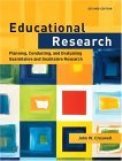 Creswell Creswell |
Problems and Methods in Education research helped me to consider how to frame research questions and how to match research designs to these questions. The two projects gave me an opportunity to expand on the research proposal I started in the Research in Teaching course. The work done in this previous course began to develop my competence in writing a study by study literature review. Following this up with EDRS 810 gave me the opportunity to work with writing two distinct methods sections for the same topic of study. One project involved a quantitative design for a study exploring action research and teacher and collective efficacy, while the other employed a qualitative design. The two could probably be merged into a single mixed method design in the future. I need to begin using the protocol for forming research questions, matching appropriate research designs, obtaining proper permissions via high quality human subject proposals, and writing the appropriate methods sections as I consider various action research projects at school--especially if I am to internalize this very detailed an methodical way of thinking and communicating. |
| EDRS 811 Quantitative Methods in Education Research Dr. Dimiter Dimitrov Hinkle, Wiersma, 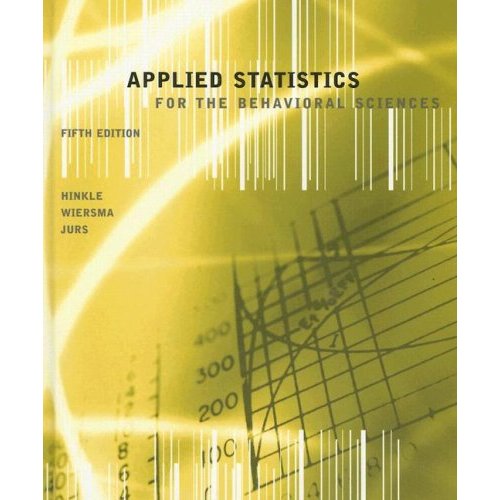 Jurs |
Quantitative Methods in Education Research introduced me to many aspects of scientifically based research. Some of these areas include the various statistical tests (ANOVA, linear regression, etc.), using APA formats for writing results and including tables and graphs, and framing and phrasing research questions and hypotheses. Dr. Dimitrov made a key comment during a private discussion regarding how linear regressions were set up in research concerning oral language development and emergent literacy skills. He said that the equations and moves made within these equations need to be based on sound theory. It is at this point that I began considering that research being conducted by some in the field of early literacy could be working with an incomplete theory; and that this is part of the reason it has been difficult to statistically explain the place and the value of language in reading. There are two ways in which I could follow up on this idea. First, I need to develop more competence in using and understanding more advanced statistical tools, especially since many in this research area have moved to structural equation models. Second, I need to develop skills in qualitative and mixed method research in order to explore potential theoretical shifts in the construct associated with literacy acquisition. The class, Qualitative Methods in Education Research, will introduce me to these areas. However, I am not sure if mixed methods or advanced quantitative methods should be my advanced class. |
| EDRS
812 Qualitative Methods in Education Research Dr. Earl Reybold 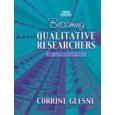 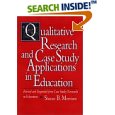 Glesne Merriam Emerson, Fretz, Shaw
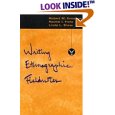 |
Qualitative Methods in Education Research guided me in developing a research identity, introduced me to grounded theory, and initiated me into the intense world of data collection and coding. This class began to bring ways of knowing into research ideas and design in ways that quantitative does not sustain.There seems to be room for flexibility and creativity while at the same time little room for sloppiness and haphazardness. I am especially drawn to grounded theory as a way of developing an action research agenda for a particular school context. Grounded theory could be a structured way of incorporating others' perspectives and reaching marginalized voices in research areas like the achievement gap. |
| EDRS 797 Mixed Methods Dr. Joseph Maxwell Spring 2008 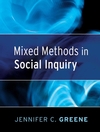 Greene Greene |
Mixed methods brought several aspects of research to my attention: research stance, a research design map, the purposes of statistical significance and effect size, and validity. I like th idea put forth by Schuman that skillfully mixing methods can generate more insight than eight quantitative or qualitative methods can alone (depending on the question). This thought seems in line with Kuhn's idea that one paradigm will give rise to another when what is being studied is asking for more to be seen. Mixing methods is useful in studying how theoretical knowledge interplays with situational knowledge in teaching and learning. Maxwell's design map captures the recursive nature of creating a mixed methods project. I benefit from the tool in that it helps me go from a big picture to more focused, analytical connections the elements of design. It also works nicely within self-study as it helps re frame questions. Two elements of design, statistical analysis and validity, are becoming more clear to me. Knowing more about the role and inferential limitation of statistical significance and the potential of effect size in countering that limitation is helpful. The map also helps in determining the various validity threats inherent in mixed method research and provides a structured way of dealing with them in the design. A well thought out map will lead to stronger inferences, connections, and implications. |
| EDRD 832 Seminar in Emerging Trends in Literacy Dr. Nicola Williams Spring 2006  Kamil, Mosenthal,
Pearson, & Barr Kamil, Mosenthal,
Pearson, & Barr |
Emerging Trends and Issues in
Literacy created an area to learn about the various practical and political
aspects of the literacy field. |
| EDRD
829 Advanced Foundations of Literacy Education Dr. Elizabeth Sturtevant Robinson 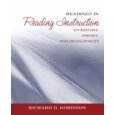  Kamil, Mosenthal, Pearson, & Barr Kamil, Mosenthal, Pearson, & Barr |
Timothy Shanahan mentioned that education policy is
influenced as much by education fashion, personal beliefs, and
commercial materials as it is by research. This notion is supported by
the realization that many of the research agendas in the field of
literacy today mirror those of the late nineteenth and early twentieth
centuries. Some of these scholarly conversations centered on the
definition of reading, when to begin teaching comprehension, and the
value of different types of phonics instruction. The differing camps
today seem to come from a lineage of research and other influences that
date back a hundred plus years. There are two takes on this phenomena. One is the adage "History repeats itself." The other view is etched into a statue representing the future which is situated outside the National Archives. The caption reads "What is past is prologue." Our field of research will indeed repeat itself if scholars do not look to past conversations. Connecting to the past will ensure that we continue to move forward towards equitable educational opportunities. Research agendas would be more focused and strategic. Finally, slowly introducing new types of research and research paradigms, such as the action research methodology, could bridge camps and positively influence dynamics between education fashion, personal beliefs, commercial materials, and scholarly research. The paper, Oral Language and Phonological Awareness, is attempt to adhere to this idea. |
| EDRD
830 Foundations of Literacy: Birth through Later Childhood Dr. Stephen White  Kamil, Mosenthal, Pearson, & Barr Kamil, Mosenthal, Pearson, & BarrAlexander, P. A. & Fox, E. A historical perspective on reading research and practices Lonigan, Christopher. Development, assessment, and development of preliteracy skills Gee, J. P. Reading as Situated Language: A sociocultural perspective perspective Tabors, P. O. & Snow, C. E. Young bilingual children and early literacy development |
Foundations in Literacy; Birth to Middle Childhood
revealed the complexity involved in literacy acquisition and early
development. Researchers and practitioners alike have varying
definitions of reading. Some see reading as a linear process that
involves the development of phonics skills, which then leads to
word attack skills and then on to decoding and fluency. Others view
reading as a combination of decoding and comprehension. I find myself
in the latter camp; however, both of these visions of reading fail to
capture the complexity of the acquisition stage and its contribution to
the eventual achievement gap that exits in our country's public school
system. There are a couple of significant concepts I bring with to the literacy camp, and both are language related. First, I agree phonological awareness is an important tool used by children to develop as readers. However, these skills are not easily developed in a vacuum wired with a skill and drill circuit. The ease to which these skills develop could be dependent on a child's level of metalinguistic awareness, which in turn could be dependent on his/her time and exposure to language. Therefore teachers need to find ways (via application of scholarly research and their own research) to develop oral language and vocabulary effectively in the classroom. Secondly, it follows that if language is key in reading acquisition in one's native language, the it makes sense to carefully navigate paths of literacy learning for our primary aged English language learners. This navigation is especially tricky for young students learning to read in their second, particularly developed language, without any experience reading in their first language. There seems to be a need for more research concerning how language can be seen and developed as a tool for literacy acquisition and also to study the implications this areas has on the achievement gap. |
| EDRD
831 Foundations of Literacy: Adolescence through Adulthood Dr. William Brozo Fall 2007 |
Seamless
Opportunities for Continuous Progress
The achievement gap remains a priority as I consider how I could contribute to the field of literacy research, teaching, and learning. The gap begins in kindergarten and widens as students progress through school. It was noted by Gee that many students that begin school passing reading tests tend to fall behind after fourth grade. Alvermann talked of the aliterate student that learns to read but chooses not to engage in academic reading. It would be interesting to find out how much of this negative activity—beginning to fall behind after a solid start or choosing to progress no more—occurs during the upper elementary years. To what degree is the elementary school structure responsible for this trend of failure and disengagement among so many students? It is unfortunate that the field of adolescent literacy must advocate for continued literacy instruction after third grade. At the same time this is a very complex issue. Not only does literacy instruction in the form of language arts need to continue, but new instruction in terms of content discourse also needs to enter the game. We need to teach students to think and communicate like a scientist, a historian, a mathematician, a commentator, and like an author of fiction. Each is a separate discourse requiring different schematics and pragmatics. Building students’ flexible use of discourses is imperative to their success in school. Primary and upper elementary teachers need to be able to consider this as they work with children. Primary teachers need to quickly ascertain the discourse being used by their students, learn to match that discourse, and then use it as a tool to teach them the discourse common in schools and academic literacy. If successful, then many students would have two discourses in their toolboxes as they enter the upper elementary grades. At this point, teachers may need to begin focusing on the discourse of science, social studies, as continue to build on those of language arts and math. Yes, elementary teacher do need to be able to do it all. It is a daunting task. Where is the leverage point for such a task? Is it written in a program somewhere? Scripted programs would have a hard time matching discourses. However, guidelines posed by Reading Next and by models such as the Reading Apprenticeship Model and cultural modeling provide scaffolds for teachers and schools. Common threads among all of these ideas include, but are not limited to, collaboration, real world interactions, and a certain degree of student autonomy. Another thread bringing the many different ideas making up the emerging knowledge base of the field is teacher research. Discourse matching, as well as other issues in literacy development, is context based and therefore there is not a one program for all answer. Teacher research in discourse matching will be a motivating asset to the field. One of the ideas I am playing with is how discourse matching builds motivation and engagement during the elementary years. More specifically, what are the tools for discourse matching? I am thinking mutli-literacies and relationships intertwined with Guthrie’s model of reading engagement will be a valid place to begin researching. The reading club is my first attempt at working at this and it has been a very inspiring experience. The reading club project will continue throughout the year. I will be learning more about mixed methods research next semester, which will help guide the work in the future. One of my more confusing or skeptical questions throughout the readings involved how to tie multi-literacies with academic literacy. I think they are tied by using discourse matching as a scaffold to new learning. The reading club will be a space, perhaps a third space, for us to play with these ideas. When, though, will the third space enter the classrooms, which is where all the power—whether hierarchal or flat—resides? This leads to my remaining skepticisms which include time and teacher education. This reality influences audience for the research. Research in reading motivation and engagement via discourse matching needs speak to policy makers so as to widen the view as to what needs to be taught and learned and how they can make the time for such teaching and learning to happen. It also needs to speak to teacher educators so that teachers are prepared to jump into the muddy waters. In short, we need time and big boots to do this work. My boots are on and I am looking at my watch. Time is ticking and somehow researchers, teachers, and policymakers need to create more seamless opportunities for students to benefit from continuous progress in academic literacies. |
| EDRS 797 Structural Equation Modeling Dr. Dimiter Dimitrov Summer 2008 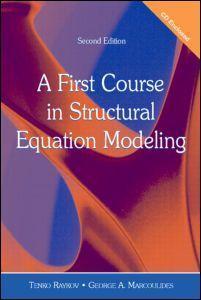 Raykov & Marcoulides Raykov & Marcoulides |
A course in structural equation modeling was a bit of a stretch for me. However, I have absolutely no regrets and I look forward to a time when I can continue learning about this process. I now have a better understanding of the research that is connecting oral language to phonological awareness and decoding. One of the tricky aspects of SEM is that the models developed need to based on sound theories. I am wondering if well constructed and connected mixed method projects (using single subject as a quantitative piece) can help strengthen the theories that hold up the models under study. Maybe this is a way of scaling up process oriented "programs" that address the achievement gap. This is how I am beginning to see the idea of Literacy and Equity: From the Classroom to Scholarship and Back taking shape. SEM may be down the road a bit for me, but I am now able to attend workshops on the topic knowing that I will come out with a better understanding of how it works. I don't think the pseudo study in my SEM project, Group Differences in Emergent Literacy Skills, is too far outside my zone of proximal development and I may follow up on it when the time is right. Or, maybe I can collaborate with someone who enjoys an expertise in SEM on a future project. |
| Independent Study Language, Story, and Literacy Acquisition Dr. Susan Burns Fall 2008 Newman
& McCormick (1995). Single subject
experimental research:
Applications for literacy. Newark, DE:
International Reading
Association.
|
The title and proposal for my independent study
are a little misleading in that the proposal is "grandiose"--the proposal outlines
a "fine career," but there are a few things we need to work out first.
This is a point well taken (along with many other helpful points given
to me throughout my GMU experience) and I am currently enjoying the
work I am doing with Dr. Burns. We are altering dialogic reading so
that it can work between sixth grade students and Head Start students.
The potential of the project is particularly exciting because the older
students are reading to the younger students in their primary language
when possible. There are a couple of different goals in the overall
project. Our goal is to measure the vocabulary and motivation effects
in students due to four fifteen minute, one on one storybook
reading sessions per week. The Head Start teacher's goal is to
engage her students with books and to help her students develop early
concepts about print. Hattie, the HS teacher, and I have
also worked this project into our professional learning community at
school, bringing in the kindergarten and moderate to severe
disabilities teachers. The work is setting up a nice framework for a
future mixed methods research project studying professional learning
and student achievement in communities of practice. The work is
focusing much of what I have learned about teacher education, the
achievement gap, and language and early literacy. The independent study
is adding literature in single subject experimental research and
vocabulary development. The experience is bringing me back to a "grandiose" idea I once had (back in 1997) that someone or a group of people needed to develop a program as a preschool/kindergarten precursor to Reading Recovery. I called it "Language Recovery." All I had at the time was a title and a focus on language. Now I am seeing it more as a real possibility. It is time to start playing with different ways of making it happen. |
|
EDUC
994 Advanced Internship in Education Dr. Ana Taboada EDRD 630: Advanced Literacy Foundations and Instruction, Birth to Middle Childhood 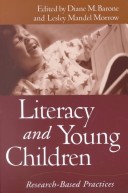 Barone & Morrow Barone & Morrow |
I
had several ideas for possible internships at my second portfolio
review. Co-teaching a course in the ASTL program was not one I was
considering at the time. However, I am extremely glad that I worked
with Dr. Taboada in this course. The focus on emergent literacy
was very timely as it connects with the work I am doing with Dr. Burns
and in school. Working with the teachers in EDRD 630 energized me
to provide more explicit support for teachers at school. Working
with Dr. Taboada helped me to bring theory back into my work with
teachers, as well. Balancing theory and practice with teachers
has been tricky, and working in a masters level course balanced the two
for my practice in school. One of my struggles has always been providing teachers with feedback. This is because coaches are non evaluative and I stayed away as a way of protecting myself from crossing the line. Dr. Taboada has been a great model for providing feedback--particularly "in time" feedback during oral presentations. She gently FORCED me to jump in and begin doing the same. I enjoyed helping students to see their strengths and to focus on particular points where increased understanding was needed. I discovered that my passion for issues surrounding emergent literacy and the achievement gap found a place in this feedback. I was also motivated by their desire to learn more and their confidence that I would be able to help them get there. |
| EDUC 797 Research In Teaching Research In Teaching Dr. Gary Galluzzo Fall 2005 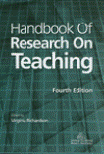 Richardson (Ed.) Richardson (Ed.) |
Teacher
development, teaching, and policy seem to have at least one foot still entrenched in a behaviorist paradigm. It
is distressing to consider the idea that this entrenchment
has a tie to the achievement gap and educational debt. Leadership Seminar, Research in Teaching, and
the Blackboard discussions for the Doctoral Seminar in Education lead me to
realize that knowing and understanding the teachers’ mental models is
imperative for continuous progress, which is equally important to reducing the educational debt. This
endeavor begins with my own reflections on my motivations in teaching. |
| EDUC 821 Research On Teacher Education Dr. Gary Galluzzo Darling Hammond & Bransford 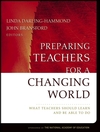 |
Teachers teach the way they were taught. This is an amazing and daunting reality. How do we help teachers connect with the mental models that drive their pedagogical and professional learning decisions? The course kept bringing me back to self-study and the Hofer and Pintrich article concerning the developmental nature of knowing and coming to know. There is a temptation by some to oversimplify what it means to educate a teacher, which is evidenced by the multiple routes to licensure. At the same time, it is overwhelming when we consider all the tensions inherent in a typical teacher education program and the complexity involved in teaching diverse students. Is teacher education simply training individuals to follow protocols or is it guiding individuals in developing the knowledge, skills, and dispositions that lead to exceptional teaching and learning? This is obviously a loaded question. We can train teachers to survive, but how do we ensure that after a couple of years of surviving they continue growing in their practice? One possible way may be to incorporate teacher research and self-study in communities of practice and systematically studying its effects on professional learning (content and pedagogical knowledge) and student achievement across contexts. See Professional Learning Communities, Professional Development, and Student Achievement for a hypothetical example. |
| EDUC
874 Achievement Gap Dr. Nicola Williams 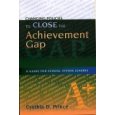 Prince Prince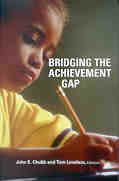 Chubb & Loveless Chubb & Loveless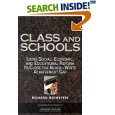 Rothstein Rothstein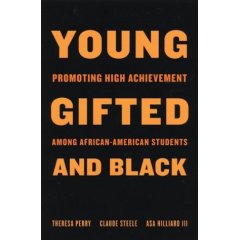 Perry, Steele, Hilliard Perry, Steele, Hilliard |
What is achievement? This question captures one of the
tensions that exists between scholarly research focused on the
achievement gap and what policy wants to put into place. Some
want to scale up programs that are proven to work using student
achievement on state and national tests as the measure. On the other
hand, some scholars are finding that teachers and their interactions
with students are important variables influencing student achievement.
Other variables are socially oriented, as well. The latter two
dimensions highlight the structural inequalities that exist in our
country and its public school system, while the notion of scaling up
programs recognizes more of the individual level variables contributing
to the achievement gap. I find myself wanting to help define the structural inequalities that exist in classrooms. The interactions between teachers and students and their families are complex and could be very informative as to how student identities and "tracked aspirations" are shaped early in their educational career. Such knowledge may influence grass roots efforts to ensure equitable educational opportunities within any given school or community. This research agenda may not be very appealing to policy makers at the onset; however, finding ways to scale up processes rather than programs may eventually make its way into the achievement gap literature as well as the literature on teacher education. I attempted to frame these ideas in the final paper, Moving Away from Deficits towards Debt Management Systems. My thoughts continue to be influenced by systems thinking and Ladson-Billings' notion of a education debt as opposed to a deficit. |
| EDUC
895 Self Study Research Methodology Dr. Anastasia Samaras Samaras & Freese
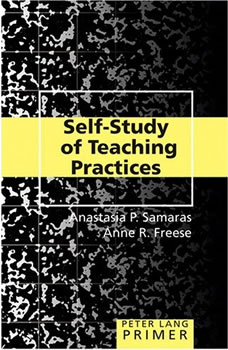 Rilke, Rainer Maria. Letters to a young poet
Loughran, J. Researching teacher education practices: Responding to the challenges, demands, and expectations of self study Zeichner, K.. Accumulating knowledge across self-studies in teacher education |
Self
study in teacher development could connect student achievement to
teacher learning in a process that is then transferred (or even
replicated) and extended in other contexts. There is a tension inherent
in the job of a reading coach or of a more traditional reading
specialist. That is, the coach or specialist is always resisting the
tendency to tell and model "best practices" for teachers as opposed to
engaging teachers' to develop their own learning agendas by connecting
the new to the known, in both theory and practice. Self study is a way
to strengthen the tension on the engagement end. An effective coach or scholar would study their personal beliefs to open connections to the perspectives of their colleagues or students (which is in and of itself connecting the known (self) to the unknown (colleagues'/students' perspectives)). This awareness would lessen the temptation to tell what needs to be known and increase the tendency to inquire and collaborate to generate and share knowledge. Processes and measures that integrate the beliefs of participants would increase levels of personal mastery and perhaps act as a filter in controlling the influences of fashion and commercialism in education. How do self study scholars capture a process that connects our known to our unknown in a way that engages teacher learning and strengthens students' academic identities? Further, how is this process documented and disseminated to be transfered (or even replicated) in other contexts? My self portrait and project, Discovering Phonological Awareness through Ourselves and Others, are my initial steps in constructing self study in this light. This project lead to a grounded theory approach and will be continued as outlined in research plans. |
| EDUC
998 Doctoral Dissertation Proposal |
| EDUC
999 Doctoral Dissertation Research |